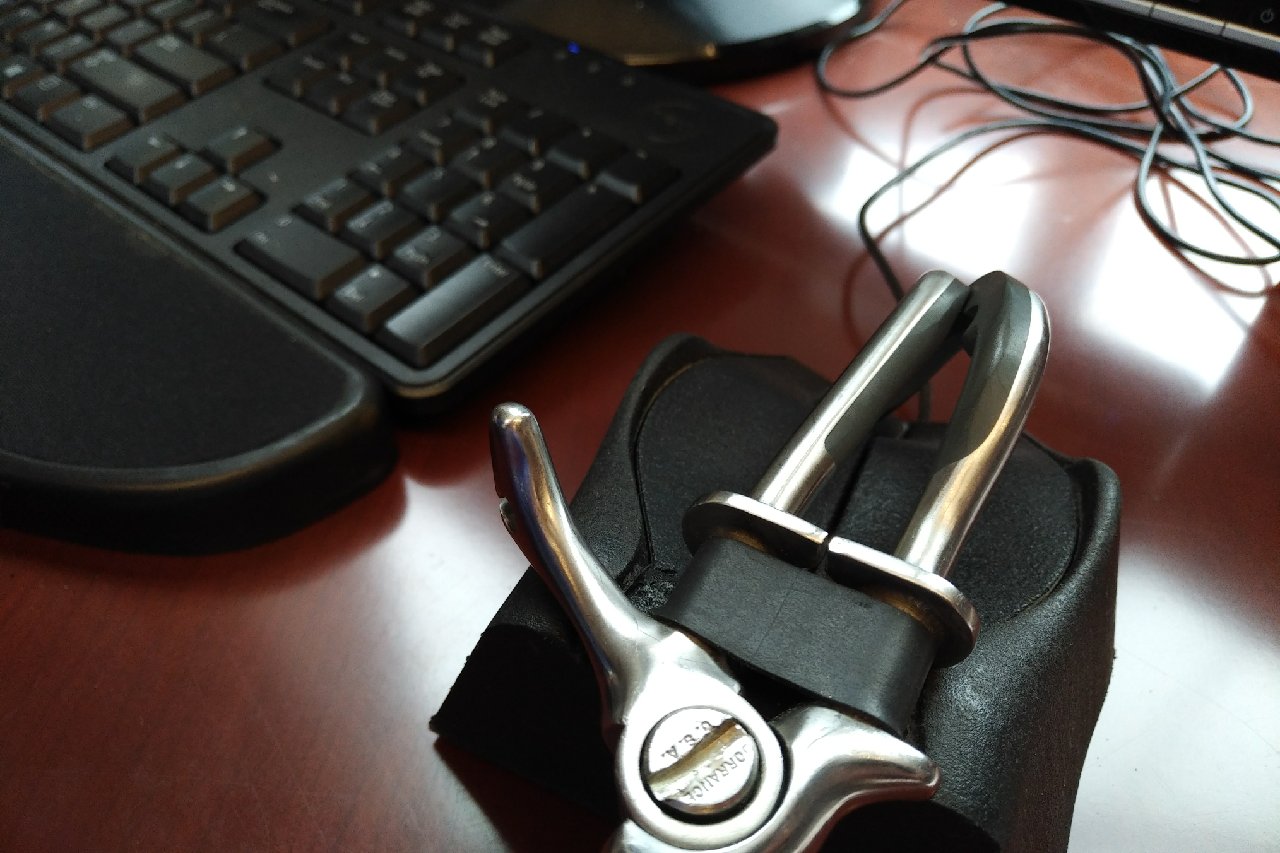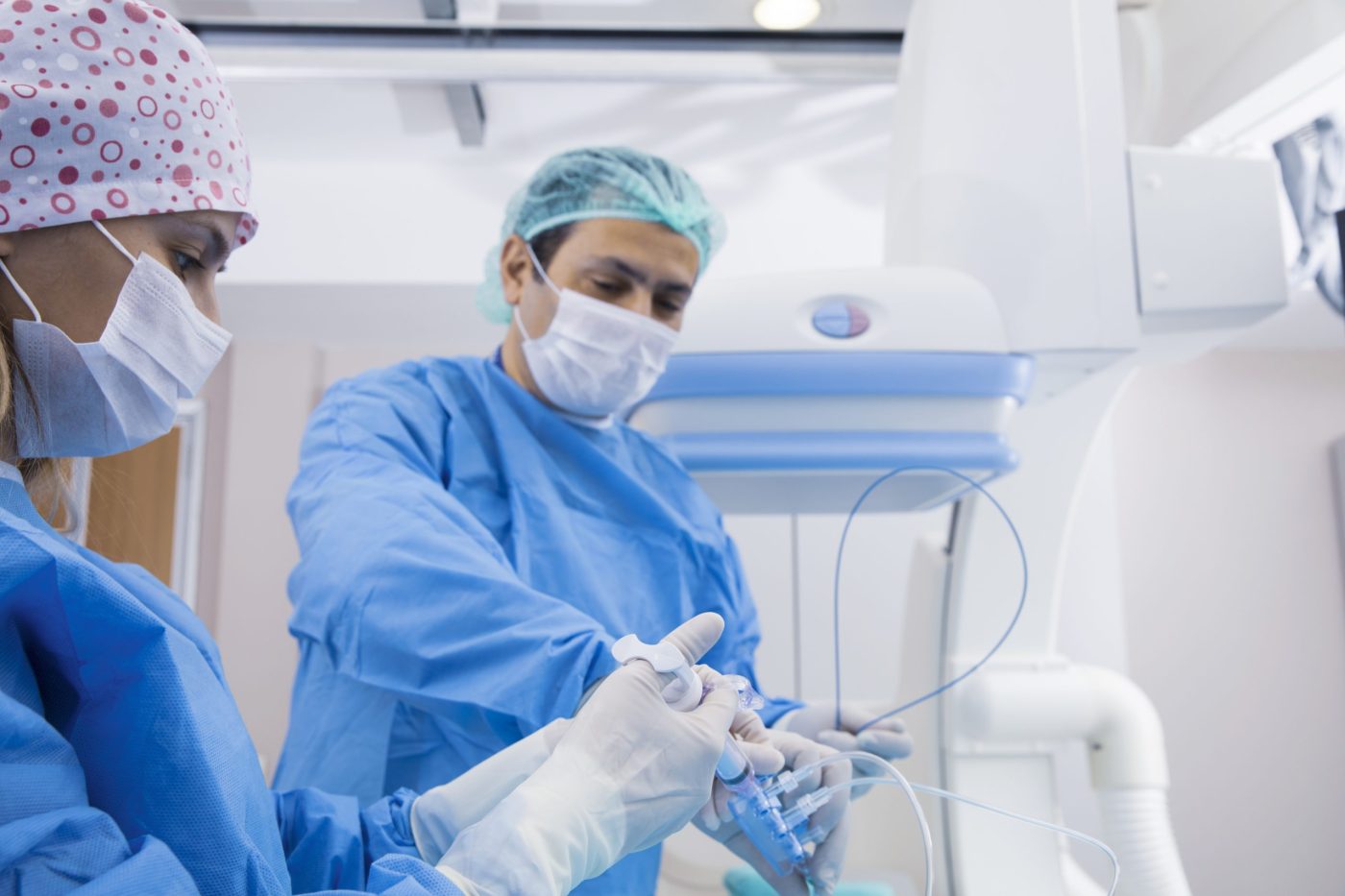In recent decades, computer mice have become just as ubiquitous as computers. Now, thanks to VA researchers, there’s even a prosthetic hook mouse for people with upper-limb amputations.
It’s yet another example of ingenuity on the part of the Human Engineering Research Laboratories (HERL), a collaborative effort between the VA Pittsburgh Healthcare System and the University of Pittsburgh. HERL researches, develops, and tests a variety of technologies, including wheelchairs, and uses 3D printers with advanced manufacturing to design and create prostheses and other assistive devices.
The idea for the mouse dawned on HERL director Dr. Rory Cooper, a bioengineer, at the 2018 National Disabled Veterans Winter Sports Clinic in Snowmass, Colorado. There, he met with Army and Coast Guard Veteran Dave Riley, a past national commander of the Veterans service organization Disabled American Veterans. Riley, a quadruple amputee, was involved in a HERL research study at the time and suggested something to Cooper:
`I’m a computer scientist’
“He said, `I’m a computer scientist. It would be really helpful if I could use a mouse that’s compatible with my prosthetic hook,’” Cooper remembered. “After returning to Pittsburgh, I met with a few colleagues. Knowing that upper-limb amputees can face challenges using a standard mouse, we set out to work on this problem for Dave.
“I had a prosthetic hook in my office, so I started playing with it to figure out how this would work,” Cooper adds. “I talked to a prosthetist. He made a socket for the hook, so you didn’t have to be a person with an amputation to try it. Then, we drew up some shapes on the computer and 3D-printed them. One of the shapes worked reasonably well.”
Cooper and his team unveiled their new invention at the 2019 National Disabled Veterans Winter Sports Clinic in Colorado. Shaped like a pyramid and elevated a few inches in the back, it provides a space where one can rest the wrist area of the prosthetic. In the front, the hook can drag a cursor and click right and left. Riley was one of several Veterans who tested the new mouse at the clinic. He found it to be very mobile, just like a conventional mouse, and gave feedback to HERL on improving the device, such as tightening up an area that would give the hook more control while moving the cursor.
HERL has printed more than 100 of the prosthetic mice
“The other thing we learned that was obvious, but we didn’t think about, was that some people use their left hand, some people use their right hand, and prosthetic hooks come in three sizes,” Cooper says. “That’s why we have three patents on this mouse. One’s for right-handed people, one’s for left-handed people, and one’s for a mouse that’s compatible with different size hooks.”
To date, Cooper says, HERL has 3D-printed more than 100 of the prosthetic mice and has sent them to the James A. Haley Veterans Hospital in Tampa, Florida; to the Center for the Intrepid, a rehabilitation facility that treats amputees and burn victims at Brooke Army Medical Center in Texas; and to Walter Reed National Military Medical Center in Maryland. Some Veterans have also used them at HERL, he says.
At the same time, HERL is working with VA’s Technology Transfer Program (TTP) to license the mouse. TTP assists researchers and other VA employees by licensing protected VA technologies to companies able to make and sell the inventions to the public.
David Marks, a technology transfer specialist with TTP, has received feedback from people who’ve used the prosthetic hook mouse. “The users stated that the mouse gives them more control on the computer,” he says. “They were happy to use it.”
More Information
Click here to read the full story.
Click here to learn more about VA research.
Topics in this story
More Stories
This week, VA’s Office of Research and Development (ORD) published three new articles spotlighting research that advances care for Veterans in heart health, mental health and health-system navigation.
In a new series that highlights advancements in VA health care, VA researchers and clinicians are appearing on a Veteran-themed media platform—Wreaths Across America Radio—to tout their critical work.
Recently published findings from the VA Disrupted Care National Project [...]





